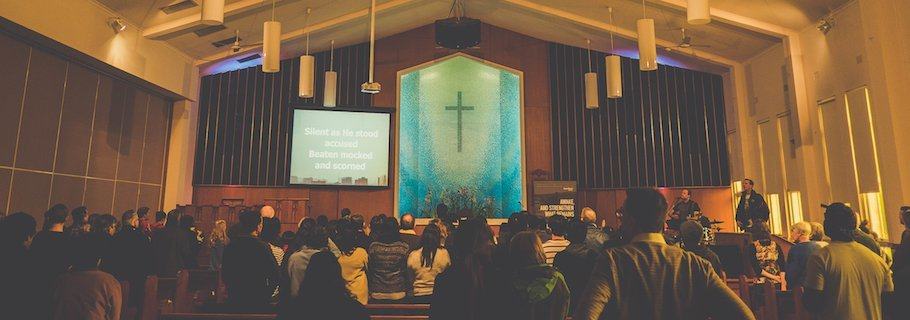I recently read an article about the architectural design of airports. Yes, that was an actual article I actually read, and I found it fascinating. A specialist in airport design told how he had been involved in planning Atlanta’s new international terminal and how he and his team had been specially tasked with finding ways to minimize the signage that so often clutters airports. He was convinced they could use design to guide people through the airport experience, from entering the terminal, to checking in, to security, to shopping, to the inevitable waiting.
He told how they had angled the ceilings to provide a natural sense of flow from the entrance to the gates, and how they had embedded designs in the floor to subliminally prompt people to move in certain directions. They added giant windows over the tarmac to show passengers which way to walk to get to the planes. They used tiling to subtly communicate “walk” and carpeting to communicate “sit.” In the end, they succeeded in their goal and created a terminal that is uncluttered by unnecessary signage, yet still capable of efficiently handling vast numbers of travelers.
Good design is often so subtle that we do not appreciate it until someone “hacks” it for us. It was only after this article hacked terminal design that I found myself impressed by otherwise unremarkable elements. My travel schedule is taking me through that terminal many times this year and, now that I know what to look for, I am enjoying and admiring it in a whole new way.
I found myself thinking about Atlanta’s international terminal as I worshipped this weekend. I know this worship service had been carefully designed, yet I wondered how many people in the room were conscious of that fact. How many were considering the different elements and what they were meant to accomplish? What might have seemed like a jumble of interchangeable songs, prayers, Bible-readings, and announcements was actually carefully planned to accomplish specific goals.
You may find there is far more to your service than you had thought.
I suspect your church’s services are much the same, that they, too, have been designed. But you may need to hack the services to find out. You may need to ask the pastor or service planner to explain the rationale behind them. As you see the purpose of the overall service and the purpose of each element, you may find that your time of worship suddenly explodes in significance. You may find there is far more to your service than you had thought.
Our church generally follows a traditional order. We begin with a call to worship that summons us to commit this time to a special purpose. Then we sing a song or two, songs like “O Worship the King,” in which we encourage one another to heed that call. After the song we have a time of confession—a Scripture reading, silent prayer, or corporate confession. Then we may sing an appropriate song before pausing to receive an assurance of pardon, a reading from Scripture to promise us that God has heard our confession and extended forgiveness. Having been assured of God’s forgiveness, our hearts are stirred to respond in praise, so we sing again.
Now the service takes a turn toward hearing from God through his Word. We have a pastoral prayer in which the pastor lays before God the cares of the congregation and also pleads with God to speak to us. Then someone reads the Bible and we sing a song like “Speak, O Lord” which asks God to open our hearts and minds to receive the Word as it is preached. The service concludes with a song of response to the sermon, a commission (which is how we like to frame our announcements), and a benediction which concludes the service with a blessing from God through his Word.
The service tells a story that begins with the call to worship and closes with the benediction.
In some way, every song is planned to complement the theme of the service (which, in turn, is the theme of the sermon). Every Scripture reading and every prayer is purposeful. Even the announcements are meant to serve a purpose in calling us to live as God’s people. Taken as a whole, the service is meant to point to the gospel, to follow the pattern of encountering God and seeking and receiving his forgiveness, and responding, and living in joyful obedience. The service tells a story that begins with the call to worship and closes with the benediction. But you only see it if you hack it.
In a well-planned worship service there are no redundant elements. If every element is planned, every element is important, which leads to an important point of application: People who show up late are missing a part of the story. And many do. People who would never miss the opening credits of a film seem willing to miss the call to worship. People who wouldn’t skip the first chapters of a novel routinely dawdle past the assurance of pardon. Yet those who show up after the call to worship have missed the very element that consecrates the time to the Lord. Those who turn up only at the assurance of pardon have neglected the confession. Those who wander in late are robbing themselves of half the story, skipping out on half the blessing.
Next time your travels take you through Atlanta’s international terminal, it’s worth pausing to look around. Perhaps even compare your experience there to one of the older, domestic terminals. You will quickly see the the importance of good design. And next time you’re at church, consider your service and there, too, consider the importance of design. Enjoy the service as an experience carefully planned to lead you to your God.










